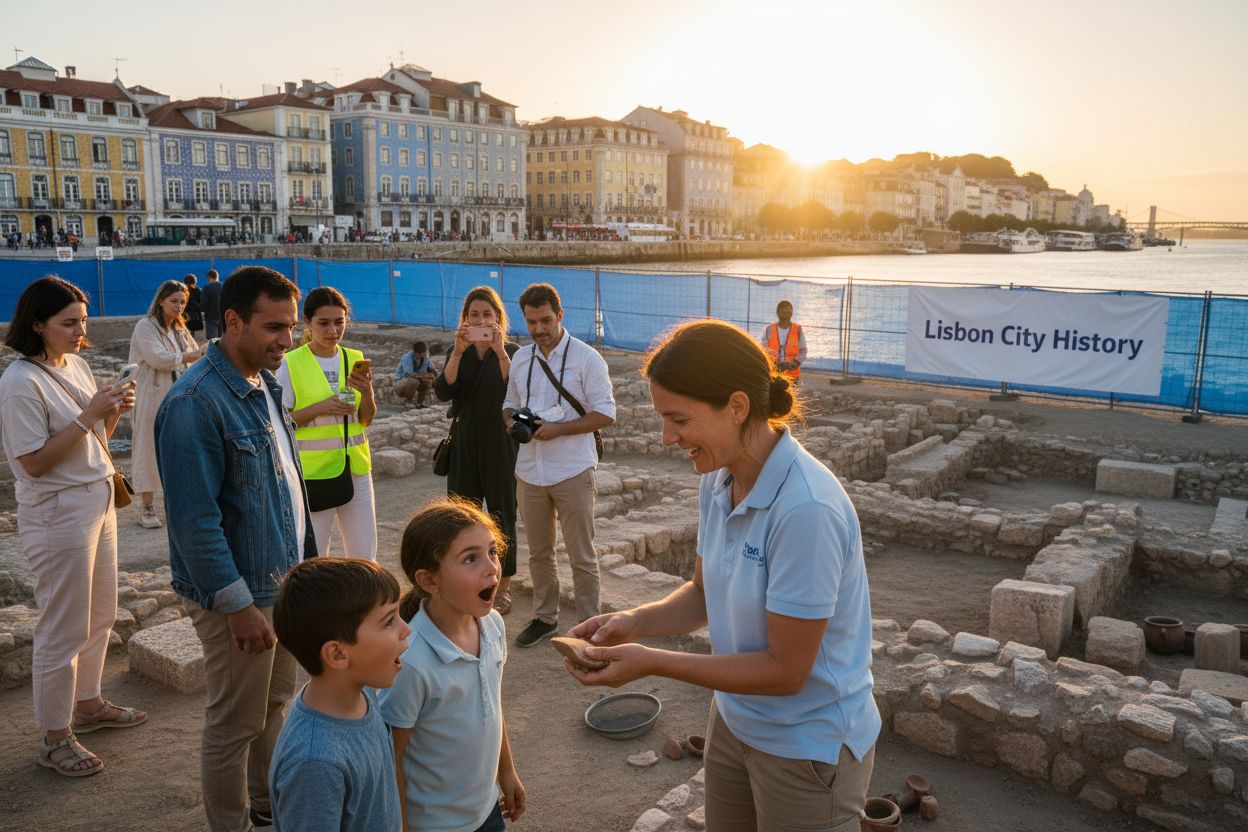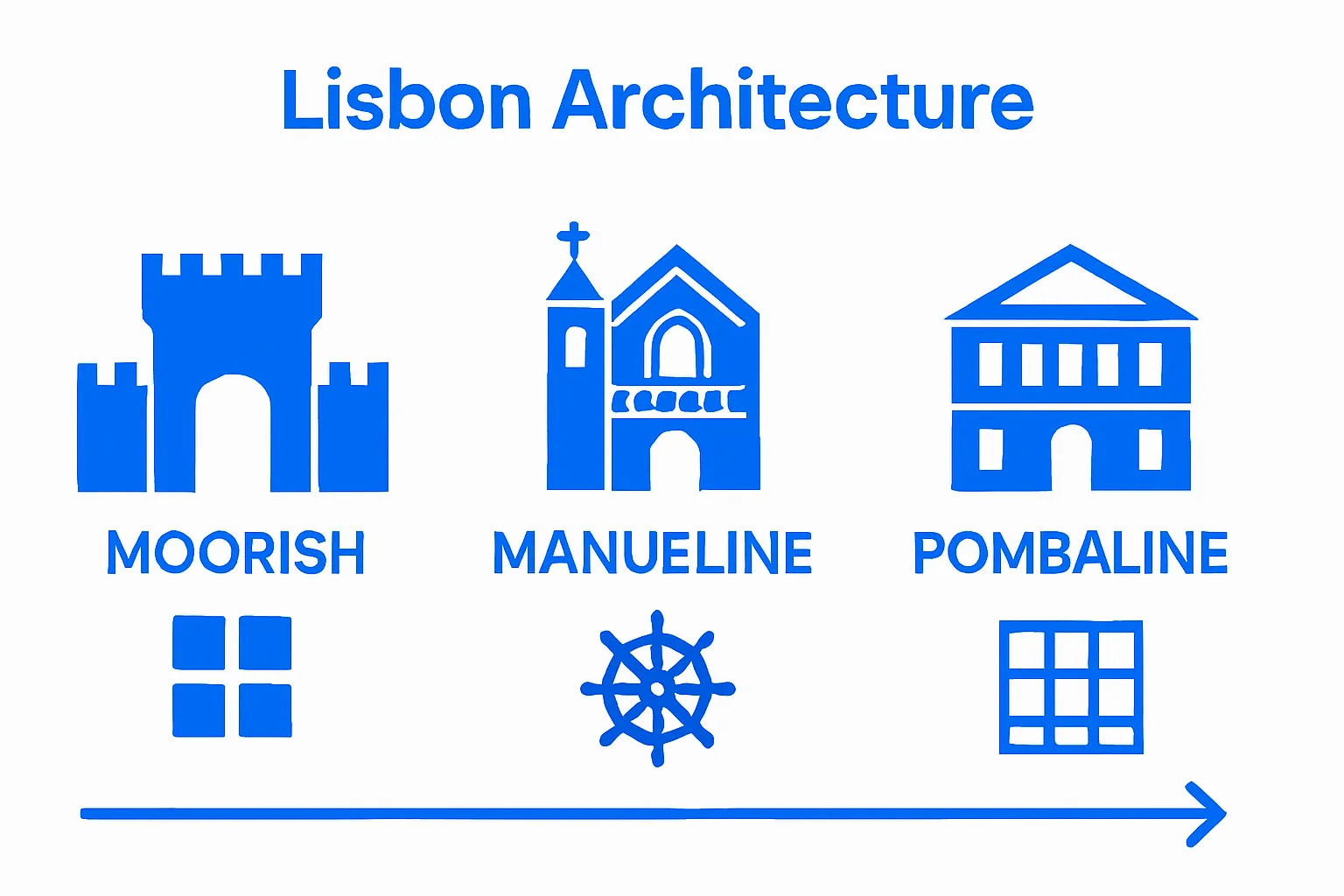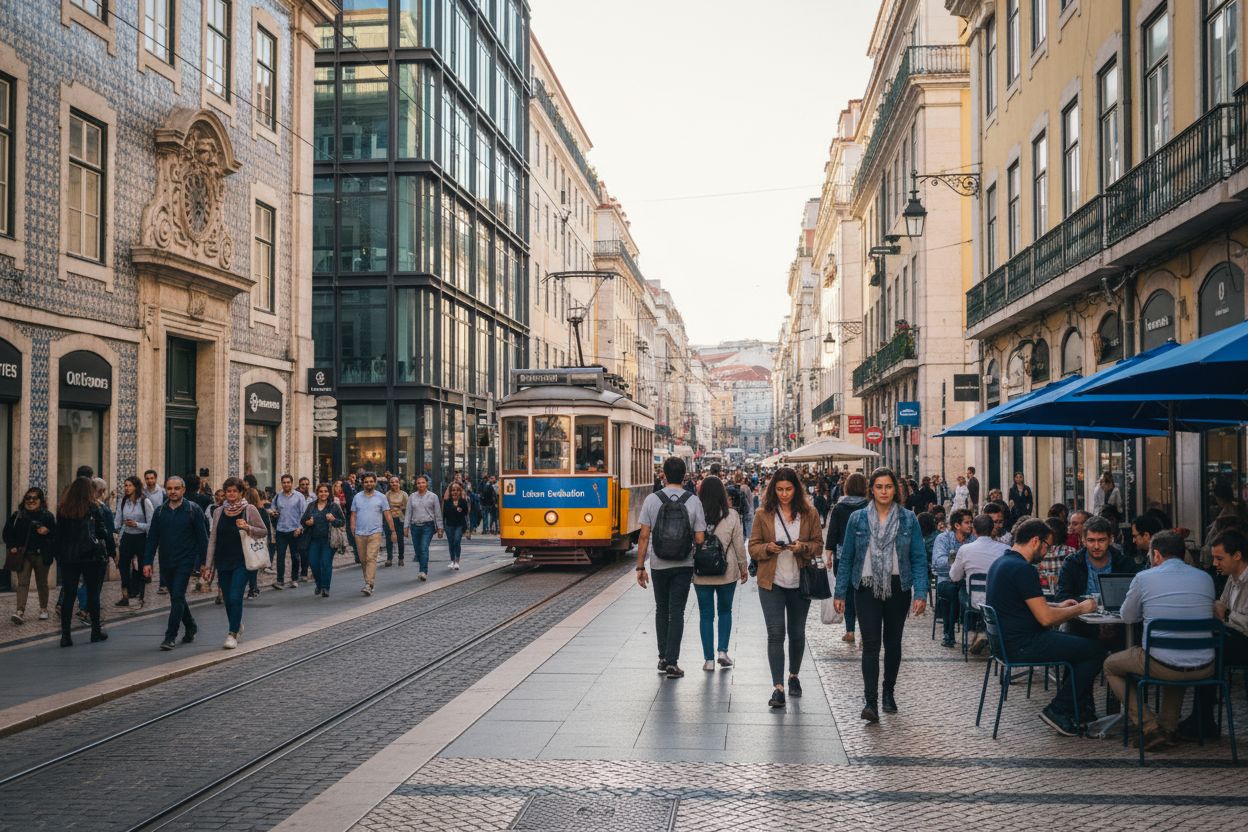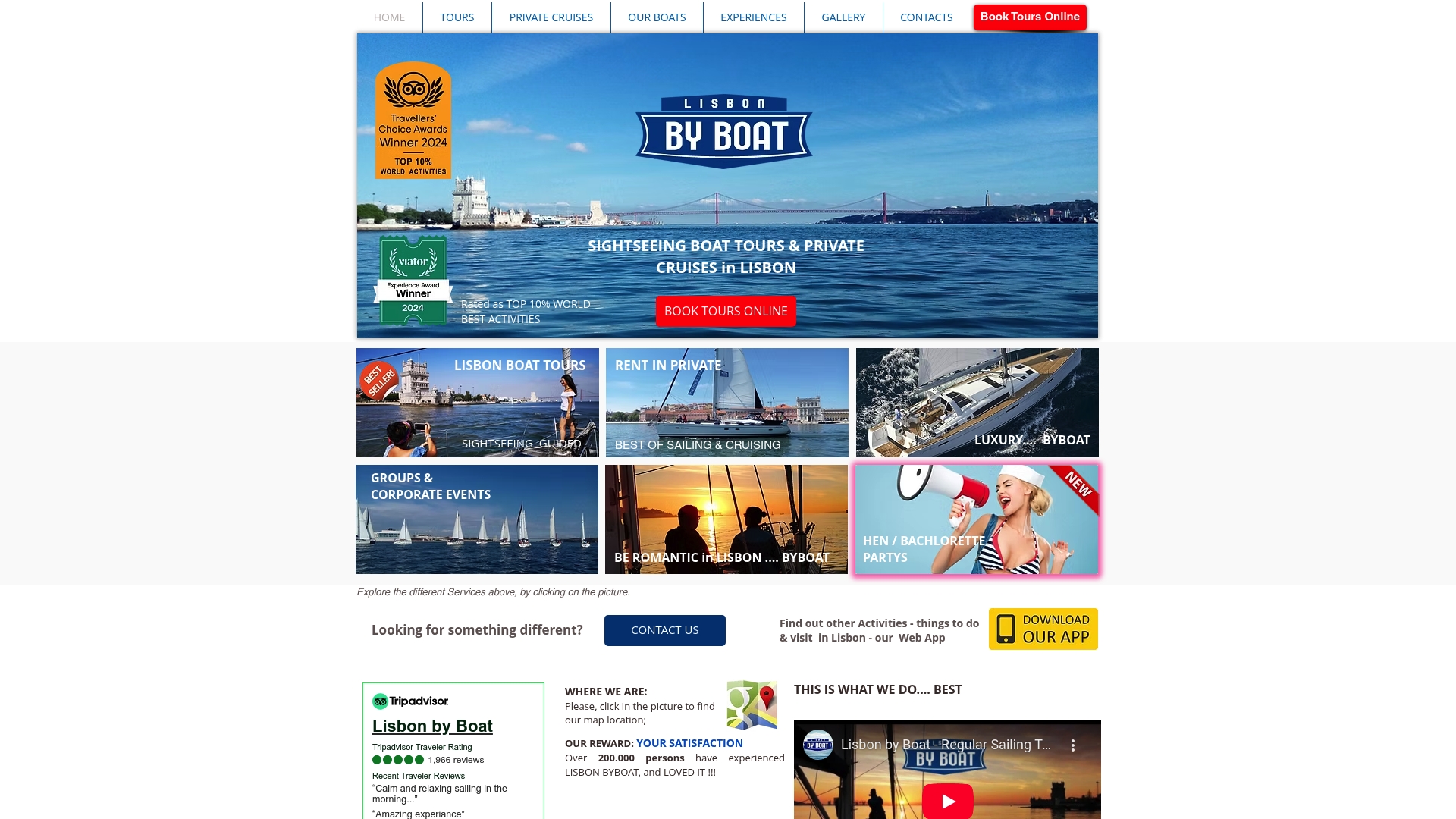Understanding Lisbon City History: A Journey Through Time
- lisbonbyboat
- Oct 5
- 8 min read

Lisbon is often called one of the oldest cities in Western Europe and still draws people from across the globe. Most travelers expect sunlit plazas and grand age-old monuments, but the city’s roots actually stretch back over three thousand years of continuous settlement. That means Lisbon was already thriving as a vital harbor and trading post long before Rome was even founded.
Table of Contents
Quick Summary
Takeaway | Explanation |
Lisbon is one of Europe’s oldest cities. | It has been continuously inhabited for over three millennia, reflecting rich historical narratives. |
Phoenicians and Romans shaped urban Lisbon. | These ancient civilizations established key infrastructure and trade systems, laying the groundwork for its growth. |
Lisbon fueled the Age of Discovery. | As a maritime hub, it was pivotal in global exploration and connecting continents through trade routes. |
The 1755 earthquake prompted urban reconstruction. | This disaster led to innovative architectural designs and a rethinking of urban planning in Lisbon. |
Modern Lisbon is a tech and cultural center. | Today, it attracts entrepreneurs and creatives, blending historical charm with contemporary innovation. |
The Origins of Lisbon: From Settlement to City
Lisbon, a city with an extraordinary historical tapestry, traces its origins back thousands of years, representing one of the oldest continuously inhabited urban centers in Western Europe. Archaeological evidence from Britannica reveals that the region has been home to human settlements for more than three millennia, creating a rich narrative of cultural transformation and resilience.
The Prehistoric Foundations
Before becoming the vibrant capital we know today, Lisbon was a strategic location for various ancient civilizations. The earliest known inhabitants were likely prehistoric tribes who recognized the area’s exceptional geographical advantages. Situated on the Atlantic coast with a natural deep-water harbor, the location provided remarkable opportunities for maritime trade and defense.
Archaeological discoveries suggest that the first significant settlements emerged during the Iron Age, with Celtic and Iberian tribes establishing communities along the Tagus River. These early settlers were drawn to the region’s natural resources, fertile land, and protected maritime positioning.
Phoenician and Roman Influences
The city’s true urban development began with the arrival of Phoenician traders around 1200 BCE. These seafaring merchants established a robust trading post, recognizing Lisbon’s potential as a critical maritime hub. They named the settlement Ulishbona, which would later evolve into the modern name Lisboa.
With the Roman conquest in 205 BCE, the settlement transformed dramatically. Romans systematically developed the urban infrastructure, introducing advanced architectural techniques, aqueducts, and a sophisticated municipal organization. They integrated the settlement into their vast imperial network, making it an important administrative and commercial center.
Interested in exploring more about Lisbon’s incredible history? Check out our guide on Lisbon’s historical walking routes to experience the city’s rich historical landscape firsthand.
The Role of Lisbon in Maritime Exploration
Lisbon emerged as the epicenter of global maritime exploration during the 15th and 16th centuries, transforming from a strategic coastal settlement into a world-changing launching point for some of history’s most significant naval expeditions. Research from the National Maritime Museum highlights how Portuguese navigators fundamentally reshaped global understanding of geography and trade routes.
The Age of Discovery
During the Age of Discovery, Portuguese explorers from Lisbon embarked on unprecedented voyages that would redefine human knowledge about the world. Key figures like Prince Henry the Navigator strategically positioned Lisbon as the intellectual and logistical hub for maritime expeditions. The city became a melting pot of cartographic innovation, nautical technology, and exploratory ambition.
Critical innovations emerged from this period that transformed maritime exploration:
Advanced navigational instruments like the astrolabe and quadrant
Development of more seaworthy ship designs such as the caravel
Sophisticated maritime cartography techniques
Global Trade and Expansion
Lisbon’s maritime prowess enabled Portugal to establish a vast trading network spanning multiple continents. Explorers like Vasco da Gama pioneered sea routes to India, while Pedro Álvares Cabral claimed Brazil, effectively connecting Europe with previously unknown territories. These expeditions not only expanded geographical knowledge but also initiated complex economic and cultural exchanges that would shape global history.
Discover more about Lisbon’s outdoor adventures that connect you with its maritime heritage and experience the spirit of exploration that defined this remarkable city.
Cultural and Architectural Heritage of Lisbon
Lisbon stands as a living museum of architectural brilliance, with layers of cultural influences spanning centuries of human history. UNESCO World Heritage research highlights the city’s extraordinary architectural landscape, which represents a stunning fusion of diverse cultural traditions and historical periods.
Architectural Diversity and Styles
The city’s architectural narrative is a complex tapestry of influences, ranging from Moorish intricate designs to Baroque grandeur and distinctive Manueline style. Each neighborhood tells a unique story through its buildings, reflecting different historical epochs. The Alfama district, for instance, preserves medieval street layouts and traditional Portuguese architecture, offering visitors a glimpse into the city’s ancient urban design.
To highlight the architectural evolution of Lisbon, the following table summarizes the defining styles and their key characteristics that have shaped the cityscape:
Architectural Style | Time Period | Key Characteristics |
Manueline | Early 16th Century | Ornate, maritime motifs, elaborate stonework |
Moorish Influence | 8th–12th Centuries | Intricate tile work, horseshoe arches |
Pombaline | Late 18th Century | Earthquake-resistant, rational grid layout, austerity |
Baroque | 17th–18th Centuries | Dramatic ornamentation, grandeur, bold facades |
Medieval Urban Design | Middle Ages | Narrow streets, organic growth, fortified elements |
Key architectural styles that define Lisbon include:

Manueline style: Ornate maritime-themed architectural decorations
Pombaline architecture: Earthquake-resistant structures from the 18th century
Moorish-influenced designs with intricate tile work
Cultural Preservation and Transformation
Lisbon’s commitment to preserving its architectural heritage while embracing modern urban development creates a unique cultural landscape. Magnificent structures like the Jerónimos Monastery and Belém Tower represent not just architectural achievements, but symbols of Portugal’s maritime history and cultural resilience.
Explore Lisbon’s vibrant street art scenes to discover how contemporary artistic expressions continue to shape the city’s rich cultural narrative.
Lisbon’s Historical Events and Their Impact
Lisbon’s history is marked by transformative events that have profoundly shaped not just Portugal, but global historical narratives. Historical research from Britannica reveals how pivotal moments have redefined the city’s trajectory, demonstrating remarkable resilience and adaptability through centuries of dramatic change.
Catastrophic Transformation
The 1755 Lisbon earthquake stands as one of the most significant catastrophic events in European history. This devastating natural disaster, which included a massive earthquake, subsequent tsunami, and widespread fires, destroyed approximately 85% of the city’s infrastructure. The event was more than a local tragedy it became a philosophical and scientific turning point that challenged Enlightenment thinking about human vulnerability and natural phenomena.
Key impacts of the 1755 earthquake included:
Radical urban reconstruction strategies
Advanced architectural earthquake-resistant design
Emergence of early seismological scientific research
Philosophical discussions about human resilience
Political Revolution and Democracy
The Carnation Revolution of 1974 marked another pivotal moment in Lisbon’s history. This peaceful revolution ended nearly five decades of authoritarian rule, transitioning Portugal from a dictatorship to a democratic society. The revolution, which earned its name from the carnations placed in soldiers’ rifle barrels, represented a bloodless transformation that inspired democratic movements worldwide.
Learn more about Lisbon’s vibrant cultural celebrations and discover how the city continues to honor its remarkable historical journey through modern festivities.
Modern Lisbon: Evolution and Significance Today
Modern Lisbon represents a dynamic fusion of historical legacy and contemporary innovation, transforming from a traditional maritime city into a global hub of technology, culture, and creativity. Global Cities Report highlights Lisbon’s remarkable transition into a 21st-century metropolis that honors its rich past while embracing future possibilities.
Economic and Technological Renaissance
In recent decades, Lisbon has emerged as a significant European technology and startup ecosystem. The city has strategically positioned itself as an attractive destination for digital entrepreneurs, earning the nickname “Europe’s Silicon Valley”. This technological transformation has attracted international talent, venture capital, and innovative companies across multiple sectors.
Key characteristics of Lisbon’s modern economic landscape include:
Robust startup ecosystem with numerous international tech conferences
Competitive cost of living compared to other European tech hubs
Strong government support for technological innovation
Growing international investment in digital infrastructure
Cultural and Global Significance
Beyond technological advancement, Lisbon has become a vibrant cosmopolitan center that celebrates diversity and creativity. The city hosts numerous international events, art festivals, and cultural exchanges that position it as a significant global destination. Its unique blend of traditional Portuguese charm and modern urban sophistication attracts millions of visitors and professionals annually.

Explore Lisbon’s exciting nightlife experiences and discover how the city’s contemporary spirit continues to evolve and inspire.
Discover Lisbon’s History from a Whole New Perspective
Learning about Lisbon’s incredible past is captivating, but reading alone can leave you wanting more. If you feel curious about the ancient roots, architectural wonders, and maritime achievements described in the article, imagine experiencing these legendary stories up close and from the water’s edge. Many travelers miss how the city’s dramatic history truly comes alive when you view its iconic coastline and legendary monuments right where the explorers set sail. Our sailing tours bridge the gap between historical knowledge and breathtaking reality.

Let your next Lisbon adventure take you beyond books or maps. Join our regular sailing tours for a guided two-hour journey along the historical waterfront, where our expert team brings centuries of history to life as you pass famous sights. For those seeking an even deeper connection, book a private cruise and see Lisbon’s landmarks from a sailor’s vantage point. The best way to truly understand Lisbon’s heritage is from the river that shaped it. Reserve your spot today and turn your historical interest into lasting memories with Lisbon by Boat.
Frequently Asked Questions
What are the prehistoric origins of Lisbon?
Lisbon’s origins trace back to prehistoric tribes who settled in the area over three millennia ago, attracted by its strategic location and natural resources.
How did Roman occupation influence the development of Lisbon?
The Roman conquest around 205 BCE led to significant urban development, including advanced infrastructure, aqueducts, and the integration into the Roman Empire, establishing Lisbon as an important administrative and commercial center.
What role did Lisbon play during the Age of Discovery?
During the 15th and 16th centuries, Lisbon became the epicenter of global maritime exploration, with Portuguese navigators launching expeditions that reshaped global trade routes and geographical knowledge.
How did significant historical events impact Lisbon’s evolution?
Transformative events such as the 1755 earthquake and the Carnation Revolution in 1974 significantly reshaped Lisbon’s urban landscape and political structure, highlighting the city’s resilience and adaptability.
The following table presents major historical events in Lisbon’s history and their transformative impacts on the city and its society:
Event | Year | Impact on Lisbon |
Phoenician Settlement | ~1200 BCE | Established Lisbon as a key maritime trading post |
Roman Conquest | 205 BCE | Development of advanced infrastructure and integration into empire |
Age of Discovery | 15th–16th C. | Lisbon became global maritime and trade hub |
1755 Lisbon Earthquake | 1755 | Large-scale destruction, led to urban reconstruction and architecture innovation |
Carnation Revolution | 1974 | Transition to democracy, end of authoritarian rule |
Recommended


Comments